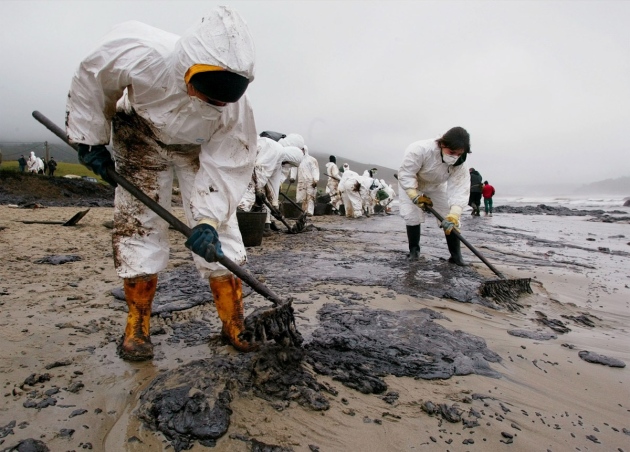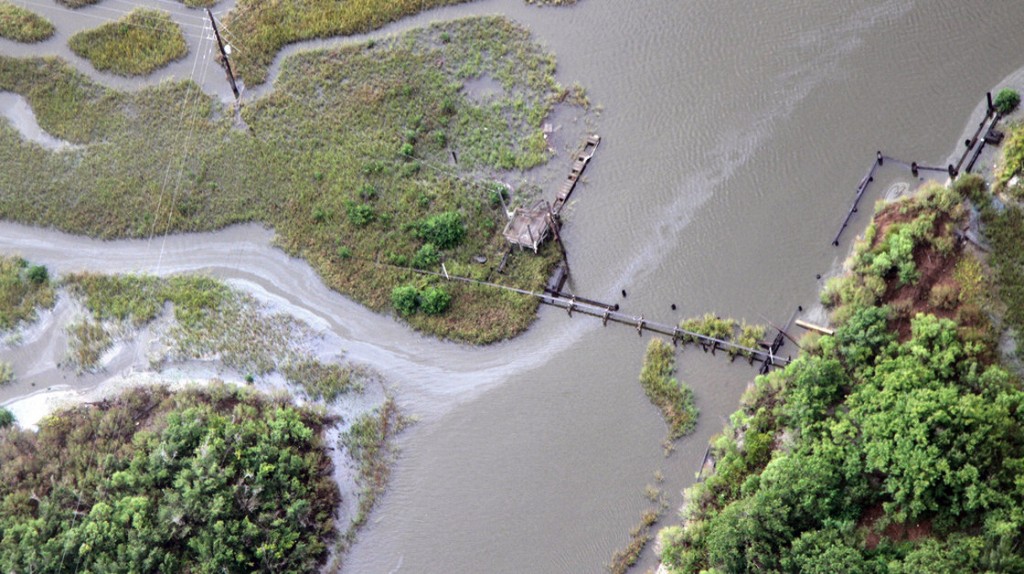http://www.eenews.net/energywire/2014/04/24/full
Mike Soraghan, E&E reporter msoraghan@eenews.net
Thursday, April 24, 2014
One of the country’s major providers of hydraulic fracturing services plans to begin disclosing all the chemicals it uses in “fracking” fluid, without exceptions for trade secrets.
The policy of Baker Hughes Inc., rolled out quietly on an unheralded page of its website, is a split with competitors, prominent industry trade groups and even some regulators. It tracks with the recommendation of an Obama administration panel looking at FracFocus, the website where most companies report their fracking chemicals.
“Baker Hughes believes it is possible to disclose 100 percent of the chemical ingredients we use in hydraulic fracturing fluids without compromising our formulations,” the company’s website states, deeming the new policy “a balance that increases public trust while encouraging commercial innovation.”
Baker Hughes spokeswoman Melanie Kania confirmed that the website statement indicated a corporate policy that the company is moving away from asserting trade secret claims. The company plans to begin eliminating proprietary exceptions “where accepted by our customers and relevant governmental authorities,” according to the website.
A critic of the current system for disclosure said she was heartened by Baker Hughes’ change in policy. “If they’ve found a way to report with better disclosure, I’m on board,” said Kate Konschnik, policy director of Harvard Law School’s Environmental Law Program. “It’s a step in the right direction.”
But Halliburton Co., a Baker Hughes competitor, along with trade groups such as the American Petroleum Institute (API) and America’s Natural Gas Alliance (ANGA), have defended the current level of protection for trade secrets. “A company’s trade secrets can be among its most important assets — the key intellectual property that allows it to keep its market position for its products or services and provide value to its shareholders,” API, ANGA and other industry groups wrote last month in joint comments about a government report about FracFocus.
Trade secret exemptions have emerged as the latest sticking point in the tug of war between environmentalists and drilling companies about disclosure of the chemicals used in fracking. Those chemicals make up only a small fraction of the volume of the fluid that is blasted underground to shatter rock formations and release oil and gas. But with modern “frack jobs” using millions of gallons of water, even small percentages can add up.
After initially resisting public release of ingredient lists, industry has come around to disclosing more and more data (Greenwire, June 21, 2010). In 2011, oil and gas companies coalesced around the FracFocus site. Steve Everley of the industry group Energy in Depth says the debate about trade secrets can overshadow how much information is already being disclosed. “It’s not a question of whether people are or aren’t disclosing. It’s a question of how,” Everley said. “Companies are disclosing a lot more than critics are alleging.”
But industry has held the line on its desire to keep secret some of the ingredients. They say relinquishing that would give away companies’ competitive edge. “Trade secret protection is critical to encourage innovation, the environmental and economic benefits of which are being demonstrated daily in the oil and gas industry,” Halliburton wrote in its comments on the government report. Earlier this month, North Dakota’s chief oil and gas regulator, Lynn Helms, derided proposals to force full disclosure, asserting that companies would curtail the use of newer mixtures rather than give up trade secrets (EnergyWire, April 17).
A ‘systems approach’ to disclosure
The oil and gas companies that operate wells have often cast the service companies, such as Baker Hughes, Halliburton and Schlumberger Ltd., as the impediment to disclosure. Operators have said they don’t usually know what chemicals service companies are using to frack their wells.
A Department of Energy panel reviewing FracFocus for the Obama administration reported earlier this year that at least one chemical ingredient was omitted for 84 percent of the wells listed on FracFocus.
Environmental groups see the secrecy as ripe for abuse, a way to hide the use of potentially dangerous chemicals. In Wyoming, environmental groups have sued the state, claiming trade secret exemptions are granted too freely (EnergyWire, March 13). The DOE panel brushed aside many of industry’s concerns in a report, saying trade secrets can be protected by reporting the raw chemicals separately from the additive products they go into.
The report calls this a “systems approach.” The common analogy for such a systems approach is that Coca-Cola Co. reports its ingredients on every can, but the recipe remains secret. Kania said Baker Hughes’ new initiative is intended to implement such a systems approach.
The DOE panel, officially a task force of the Secretary of Energy Advisory Board, said reducing trade secret claims would build public confidence. “The Task Force is challenging FracFocus to operate in a manner that encourages full disclosure with few, if any trade secret exceptions,” the panel’s report stated.
The task force said that in March, “at least one large oil field service supplier” was already using such a systems approach. Based on reviewing FracFocus filings, Konschnik said she believes that to be Schlumberger. A Schlumberger spokesman did not return a call seeking comment.
But Halliburton, in its comments on the panel report, directly rebutted the panel’s assertions on the systems approach. “The method that the Task Force advocates for resolving the trade secret issue — the ‘systems approach’ to disclosure — simply will not protect proprietary information in the way the Draft Report suggests,” Halliburton wrote.
———————————————
Baker Hughes Corporate Policy
http://www.bakerhughes.com/products-and-services/pressure-pumping/hydraulic-fracturing/environmental-solutions-and-chemical-disclosure/disclosure
Hydraulic Fracturing Chemical Disclosure Policy
Baker Hughes believes it is possible to disclose 100% of the chemical ingredients we use in hydraulic fracturing fluids without compromising our formulations – a balance that increases public trust while encouraging commercial innovation. Where accepted by our customers and relevant governmental authorities, Baker Hughes is implementing a new format that achieves this goal, providing complete lists of the products and chemical ingredients used.
Fast, accurate and full disclosures supported by a dedicated team
Baker Hughes supports our customers in communicating important information about the chemistry used in our hydraulic fracturing fluids in the most expedient way possible. That is why Baker Hughes endorses FracFocus, the national hydraulic fracturing chemical registry managed by the Groundwater Protection Council and the Interstate Oil and Gas Compact Commission, and accessible at www.fracfocus.org. FracFocus represents a coordination of efforts with regulators, operators, and other stakeholders to promote responsible hydraulic fracturing chemical disclosure, which is more comprehensive and well-site specific than that which could be provided by any individual company.
Our dedicated disclosure team uses systems designed to ensure that this data is accurate and that customers receive it quickly to meet regulatory deadlines. This process gives our customers confidence that Baker Hughes staff is always ready and available to help them through the process and troubleshoot any issues.
Special thanks to Richard Charter



